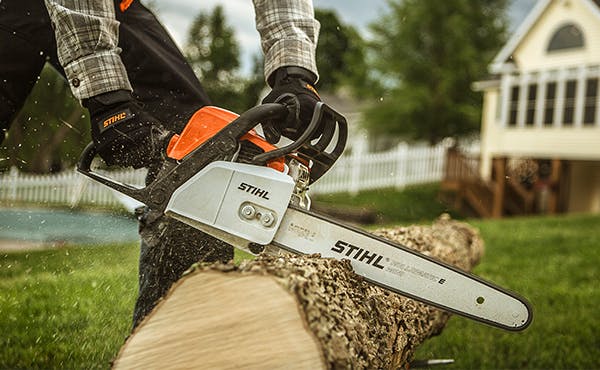Chainsaws are powerful tools designed for cutting through various materials with precision and efficiency. However, there are certain objects and materials that should never be cut with a chainsaw due to safety hazards, potential damage to the equipment, and environmental concerns. In this article, we'll explore what not to cut with a chainsaw to ensure safe and responsible usage of this indispensable tool.
1. Metal Objects:
Chainsaws are primarily designed for cutting wood and should never be used to cut metal objects such as nails, screws, wire, or metal pipes. Attempting to cut metal with a chainsaw can result in damage to the blade teeth, kickback, and potential injury to the operator. Additionally, cutting metal objects with a chainsaw can cause sparks, posing a fire hazard in certain environments.
2. Rocks and Concrete:
Chainsaws are not equipped to cut through rocks, concrete, or masonry materials. Attempting to cut these hard materials with a chainsaw can cause the blade to dull quickly, leading to reduced cutting performance and potential damage to the chainsaw's motor and components. Moreover, cutting rocks and concrete with a chainsaw can release harmful dust particles into the air, posing health risks to the operator.
3. Frozen Wood:
Using a chainsaw to cut frozen wood or ice-covered branches is not recommended due to the increased risk of kickback and blade binding. Frozen wood is harder and more brittle than unfrozen wood, making it unpredictable to cut and increasing the likelihood of accidents. Instead, it's advisable to wait for the wood to thaw before attempting to cut it with a chainsaw.
4. Overhead Limbs and Branches:
Cutting overhead limbs and branches with a chainsaw can be extremely dangerous due to the risk of falling debris and potential injury to the operator. Working with a chainsaw above shoulder height increases the risk of losing control of the tool and can result in serious accidents. It's essential to use alternative tools such as pole saws or handsaws for cutting overhead branches safely.
5. Wet or Green Wood:
Chainsaws are less effective at cutting wet or green wood compared to dry wood. Wet wood contains moisture that can cause the chainsaw blade to bind and lead to kickback. Moreover, cutting wet wood accelerates the dulling of the blade and reduces cutting efficiency. It's recommended to allow wet or green wood to dry thoroughly before attempting to cut it with a chainsaw.
Conclusion:
In conclusion, while chainsaws are versatile tools capable of cutting through a wide range of materials, there are certain objects and materials that should never be cut with a chainsaw due to safety, equipment, and environmental considerations. By avoiding cutting metal objects, rocks, frozen wood, overhead limbs, and wet or green wood with a chainsaw, operators can mitigate risks, prolong the lifespan of their equipment, and prioritize safety in their cutting endeavors.

